How to Plug In Your Brain
If neuroscientists are right, you’ll soon be able to sharpen your focus and boost your memory by recharging your brain—with electricity
/https://tf-cmsv2-smithsonianmag-media.s3.amazonaws.com/filer/bd/02/bd02b85a-11b1-4cc7-ab70-3c1d62b6c0b2/may2016_b99_braintraining-wr-v2.jpg)
Two hundred and thirty-five years after the Italian scientist Luigi Galvani reported that dismembered frog legs twitch in response to a static charge applied to a nerve, we are still exploring the mysteries of what he called “animal electricity,” especially in the brain. That the brain generates a bit of its own electricity, which can be detected by an electroencephalogram, or EEG, is well established, as is the fact that some neurosurgeons today sometimes use hair-thin electrodes to stimulate deep brain structures and stop Parkinson’s tremors. But scientists are now exploring a question that is, well, mind-boggling: Can low-voltage doses of electricity, transmitted through hair, skin and skull directly into particular regions of the brain, make already healthy people sharper and more alert?
Aron Barbey, a 39-year-old neuroscientist at the University of Illinois, is a leader in this research, though he is excruciatingly cautious about its prospects. He resists the idea that tomorrow’s malls and airports will feature commercial brain-charging stations, updated versions of today’s massage stops, but if that future (or something like it) comes to pass, his work will have played a critical role in bringing it about. Barbey is the director of the UI’s Decision Neuroscience Laboratory at the university’s Beckman Institute for Advanced Science and Technology, and his experiments appear to point to a time when students, soldiers, executives and the elderly could all benefit from a treatment called transcranial direct-current stimulation (tDCS).
In a windowless room at Wright-Patterson Air Force Base, near Dayton, Ohio, I watch John McIntire, a 33-year-old civilian volunteer, receive tDCS. He sits at a computer, clicking on a series of tiny blinking lights, a gauze bandage wrapped under his chin and across the top of his head. The bandage keeps a small cluster of electrodes in place on the upper left side of his head. There’s another cluster of electrodes on his upper right arm. Wires from a small blue box on the desk carry a weak electrical charge that flows from the box to the electrodes on his head and down though his brain to the electrodes on his arm. Researchers believe the current is hitting some key areas of his mid-brain, including the locus coeruleus, which releases norepinephrine and is involved in attention and wakefulness.
“I feel fine,” says McIntire at the end of the 30-minute session. Did he experience any physical sensations as the current passed through his brain? “No,” he says, “I can’t actually tell if I’m receiving the treatment or not.” Because it’s a double-blind study, some subjects receive sham tDCS, with no current. (McIntire got the real thing.) Researchers say they haven’t seen significant side effects, just some skin sensitivities from the electrodes. Some subjects who receive tDCS report headaches afterward, but so do some of those who receive sham treatments.
The ongoing study at Wright-Patterson is a collaboration between Barbey’s group and the Air Force Research Laboratory (AFRL). It’s just one of many experiments Barbey has launched with major research partners. “Our goal,” he says, “is to understand the neural mechanisms that underlie human intelligence and decision-making—how intelligence and decision-making are implemented in the brain—and then use that knowledge to develop these new interventions.”
It’s not hard to understand why the Air Force would be interested in what Barbey has to offer. Many of its personnel spend up to 12 hours a day, six days a week, looking at pictures of surveillance imagery and trying to identify their drone marks. Research shows that their performance starts to decline after just 20 minutes on duty. “Missing targets in real-life battle situations is a big deal, because that could cost somebody their life,” says Andy McKinley, an AFRL neuroscientist. “And we think tDCS might be a tool to help the analysts, when they start getting fatigued, to maintain their performance.”
So far, the findings have been promising. In a series of studies published since 2013 in NeuroImage, Brain Stimulation and other journals, tDCS alone was shown to reduce fatigue and improve or preserve performance. Service members who received the current in the morning were far more alert and vigilant than control subjects when they were tested in the late afternoon. The treatment also seemed to improve their moods and energy levels. McKinley, who has been working with tDCS since 2007, says the effect of a 30-minute tDCS dose of two milliamperes in the morning “lasts all day long.” (By comparison, modern electroconvulsive therapy treatments involve up to 900 milliamperes.) In a related, yet-to-be-published AFRL sleep deprivation study, subjects were kept awake for 21 hours, then given either caffeine, sham tDCS or actual tDCS before continuing their duties for up to another 15 hours. Members of the third group boasted twice the accuracy in finding targets of the other two groups. They also reported higher subjective mood scores and said the tDCS made them feel refreshed.
The protocol Barbey has designed combines tDCS, nutrition, and cognitive and physical exercise in a comprehensive regimen with the potential to enhance everything from math skills to abstract reasoning. Through his work, he is probing the nature and structure of the human mind and, in the process, asking what it really means to be smart.
**********
It was his work with another generation of service members that taught Barbey the intricacies of the human brain. Between 2007 and 2011, he was a research fellow at the National Institutes of Health, studying a group of Vietnam veterans who had suffered brain trauma. The damage had been caused by low-velocity shrapnel and bullet wounds—it was limited to discrete areas, which meant most of their cognitive functions were preserved. The locations and sizes of their wounds caused different deficits, including issues with memory, language and with higher cognitive functions such as planning and problem solving.
Using a process called lesion mapping, Barbey gathered diagnostic images of the veterans’ brains and then matched the men’s damaged anatomy to their documented problems. The result was a brain atlas that made it possible to link specific cognitive functions to their underlying neural networks.
Building on that knowledge, Barbey, with various co-authors, went on to publish a formidable series of papers identifying brain networks for general intelligence, emotional intelligence, cognitive flexibility, working memory and more. In what might be considered his lesion-mapping masterwork, published in the journal Brain in April 2012, Barbey and colleagues ambitiously laid out an architecture for general intelligence and executive function—complex, goal-directed behaviors that involve widely distributed parts of the brain, including the prefrontal cortex. That study, one of the largest and most comprehensive assessments of its kind conducted to date, involved 182 Vietnam veterans and concluded that intelligence “reflects the ability to effectively integrate verbal, spatial, motor and executive processes via a circumscribed set of cortical connections.” Barbey and his team were able to pinpoint many of these connections and describe how they worked.
Barbey’s experience with the veterans left him with much more than an impressive CV. “It was incredibly profound,” says Barbey, who now serves as editor or board member at four journals, including Frontiers in Neuroscience. “We spend all this time developing these theories and thinking about the nature of the human mind and really working hard to try to understand the function of these brain networks. And it becomes this very scientific, very technical enterprise. But then, once you begin working with individuals, working with patients, with Vietnam veterans, it becomes immediately clear that there is this very important issue at stake. And it really is about improving the quality of people’s lives, and finding solutions to these very hard problems that they are facing.”
The maddening complexity of the brain itself is the biggest obstacle to addressing such problems. Or so it would seem. But that very complexity also makes it possible for science to improve performance on a wide range of tasks—as long as researchers know which networks to target. Stimulating the correct networks, Barbey says, depends on knowing which ones are involved in a given task and being able to target those networks at the correct dose and duration. “So how do we know if we’re stimulating the right structures?” he asks. “It depends on the task. The task is critical.”
In the long shadow of everything we don’t know about the brain, tDCS is shedding new light on how it works. Neurons are the media for electrical activity in the brain, but as Barbey points out, “there are like a 100 billion of them and they have many properties that elude us.” Barbey’s research focuses on human intelligence and decision-making. Intelligence, he says, emerges from the interaction among multiple brain networks, including the central executive network, a distributed neural system (a sort of 3-D spider web) that is well known to support functions like planning, problem-solving, judgment and decision-making.
In a typical tDCS experiment targeting the central executive network, Barbey arranges the electrodes to send the current through the frontal and parietal lobes as his subjects perform a computer-based task. In one such test, called the n-back task, participants are shown letters and must recall whether they match letters they saw previously.
Barbey says the electrical current enhances the excitability of the neurons involved in the task, making them more likely to fire and strengthening the synaptic connections between them. “Neurons that fire together wire together,” Barbey says, quoting an axiom by the legendary Canadian psychologist Donald Hebb. In a September 2015 paper, the AFRL scientist Ryan Jankord and colleagues reported that 30 minutes of tDCS in rats “induced a robust enhancement” of the connections between cells in the hippocampus that are critical for learning and memory.
In humans, tDCS also appears to recruit additional neurons not originally involved in a task, creating what Barbey calls sub-networks that improve performance. But there’s nothing inherently beneficial about increasing the excitability of neurons, he adds. “It’s only effective under specific conditions, where you are delivering electric current to regions that are involved in the task.” This is a key part of how he administers tDCS: The subject has to be actively using the parts of the brain in question. Ever cautious, however, Barbey emphasizes that “the underlying biophysical mechanisms are not well characterized.” In other words, researchers aren’t entirely sure why tDCS does what it does.
Some have questioned whether it does anything at all. In January 2015, the Australia-based scientist Jared Horvath and two of his colleagues published an analysis of more than 200 tDCS studies. Their conclusion: “Our quantitative review does not support the idea that tDCS generates a reliable effect on cognition in healthy adults.” The paper set off a controversy, with defenders of tDCS questioning Horvath’s methods—he excluded more than 170 studies whose results had not been replicated by at least one other lab. Barbey takes Horvath’s point and notes that, while tDCS has been widely investigated, enthusiasm for it has “outpaced mechanistic theories” of how it works. These gaps in knowledge, he says, delay the development of more effective protocols and produce a diversity of findings that can’t be explained, lending themselves to critiques like Horvath’s.
“People have been trying to change their consciousness ever since they realized they had consciousness,” says Jonathan D. Moreno, a professor of medical ethics and health policy at the University of Pennsylvania’s Perelman School of Medicine. Moreno says he’s underwhelmed by the progress in the tDCS field so far. “I just think we’re so much in the woods on this still, and we will be for a long time,” he says. “It depends on who you are trying to enhance, and for what. You could never get me to be Einstein and Einstein probably doesn’t need much enhancement.”
He’s less skeptical about the therapeutic use of tDCS to restore some degree of normal function in people with certain disorders. “Therapy seems to be more doable than enhancement,” he says. Multiple studies in recent years have shown it to have potential as an effective treatment for major depression, post-traumatic stress disorder and other neuropsychiatric problems. It has also shown promise for Alzheimer’s and stroke patients during word-memory and picture-recognition tasks. And a 2014 study found that tDCS improved language learning, suggesting its potential as a treatment for the language deficits caused by stroke. Research by the Air Force, unrelated to clinical disorders, may point to another potential benefit of therapeutic tDCS: Teams of researchers in Germany, Brazil and the U.S. have found that two weeks of daily tDCS can result in weeks or even months of improved performance on a very specific task. “It looks like you are making lasting changes to neural connections in the brain,” McKinley says.
A 42-month project called Insight might provide more concrete answers. Barbey’s lab launched the program in 2014, with $12.7 million in funding from the Office of the Director of National Intelligence. It’s one of the largest-ever studies of the ability to reason under novel conditions. The government’s stated goal is to improve the adaptive reasoning and problem-solving skills of intelligence personnel. Under Barbey’s supervision, 1,000 healthy volunteers between ages 18 and 44 (many of them University of Illinois students) are receiving doses of tDCS while performing cognitive training exercises that test those skills. But that’s only part of the protocol: They’re also undergoing physical fitness training sessions, and their diets and nutritional health are being monitored.
Exercise might seem low-tech compared with tDCS. But Barbey is just as interested in the power of sweat as he is in the potential of electricity. He’s involved in a separate project with the Air Force focusing pointedly on high-intensity interval training. Exercise on its own has already proven at least as effective as tDCS in enhancing cognitive performance. Though Barbey says the definitive clinical trial remains to be done, more than 40 years of research show an increase in gray-matter volume among aerobically fit older adults, as well as a 40 percent reduced risk of cognitive decline among those who exercise regularly. Alzheimer’s patients who take part in acute exercise programs have increased brain-derived neurotrophic factor, a protein that promotes the health and growth of brain cells.
According to Barbey, exercise has an especially impressive effect on the executive functions. “If we were to go outside right now and run at full speed all the way down to the end of the street and then run full speed all the way back,” says Barbey, “when we sat down here to continue our conversation we would be more attentive, our memory would be improved, we would have better executive control functions, and those effects would last about 20 to 30 minutes.”
Barbey also wants to understand the impact of nutrition on brain health and cognition. “We know that if you want to be an athlete you have to eat particular things and engage in particular types of physical activity,” he says. “That nutrition also operates on the brain.” The subjects in his Air Force project take a special supplement created by Barbey’s lab in collaboration with Abbott Nutrition. The formula is proprietary, but Barbey says it includes ingredients to promote muscle strength, cardiovascular health and aerobic fitness, as well as brain health. “In addition to that, we have specific nutritional profiles that we hypothesize play an important role in enhancing brain health and cognitive ability,” he says. In short, Barbey believes that exercise and nutrition can provide lasting, holistic benefits that just stimulating specific brain networks could likely never deliver.
Still, tDCS remains the most exotic of the interventions. It’s tempting to assume that multiple treatment sessions might increase general intelligence, instead of merely improving performance on the task at hand. But Barbey has found no evidence that tDCS can make a person smarter across the board. “The answer seems to be no,” he says.
That’s one reason he envisions a future where people will use targeted tDCS along with lifestyle changes: the latter will improve their overall health and mental performance, while the former will enhance specific cognitive abilities. As Barbey sees it, the suite of interventions will depend on an individual’s goals. A subject might want improved working memory, for instance, and need to enhance the brain networks involved. “The ability to develop a tailored intervention depends on understanding the underlying mechanisms,” says Barbey. “If we don’t understand the mechanisms, we certainly can’t achieve tailoring.”
But Barbey knows that his work feeds an alternate vision of the future, one where people in all kinds of private and commercial settings can routinely sit down for brain-charging sessions. He’d rather not speculate about such things, but when prodded about whether this model may exist 50 years from now—a kind of LensCrafters for the brain—he says, “Assuming that we’re on the right track, assuming that tDCS actually can produce robust improvements, then yes.” Then he quickly returns to present-day reality. “But we’re still learning about these methods, and we’re still running experiments to evaluate their efficacy. So it’s still too early. And that’s what happens with commercialism. They go way too fast.” Barbey holds a dim overall view of the commercial brain-training industry and doesn’t want people to lump his work in with its offerings. Millions of smartphone users, for instance, have downloaded games like Lumosity, which claim to improve memory significantly. “There is definitely evidence to suggest that if you play a working memory game, you’ll get better at that working memory game,” he says. “What’s less clear is whether that has any other impact.” (Barbey’s skepticism was reinforced in January, when Lumosity agreed to pay $2 million to settle federal charges of deceptive advertising for claiming its product could slow cognitive decline. A $50 million judgment was suspended because the company didn’t have the money.)
Barbey insists that there are no shortcuts in neuroscience. At least two commercial tDCS devices, Halo and Thync, are currently available, but he’s put off by the suggestion that it’s possible to become smarter by just flipping a switch or playing a game. “We’ve really got to take the hard road,” he says. For Barbey, the brain demands nothing less.
Related Reads
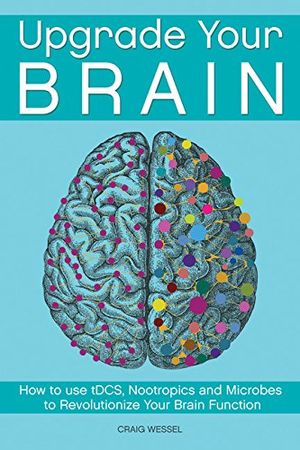
Upgrade Your Brain: How to Use tDCS, Nootropics and Microbes to Revolutionize Your Brain Function
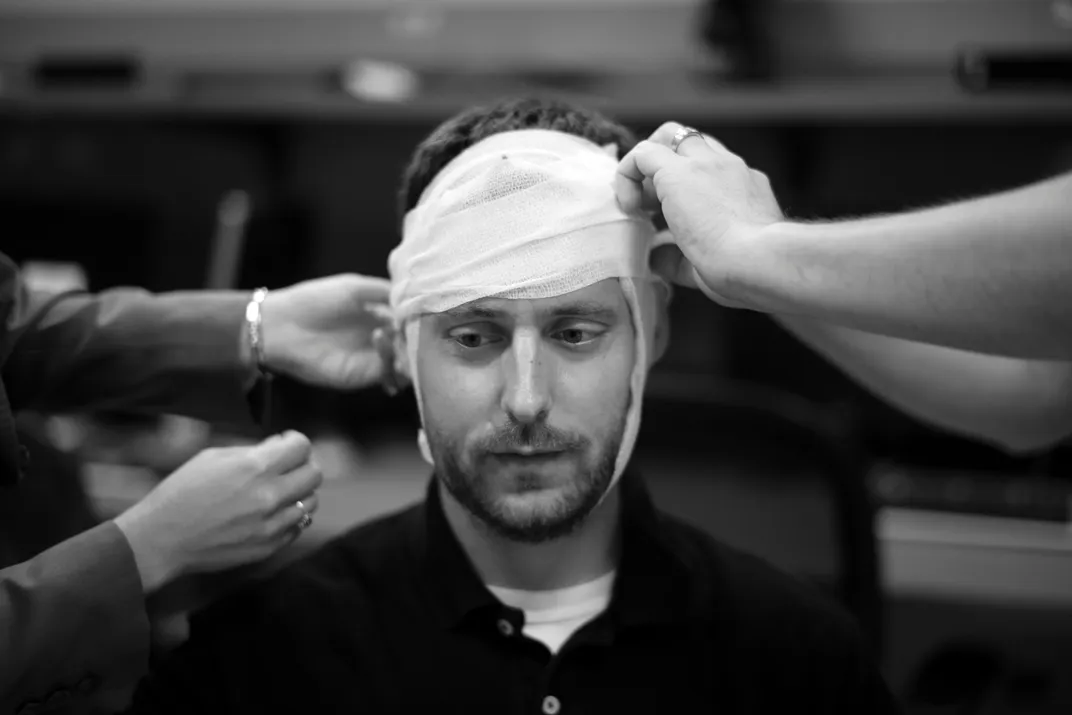
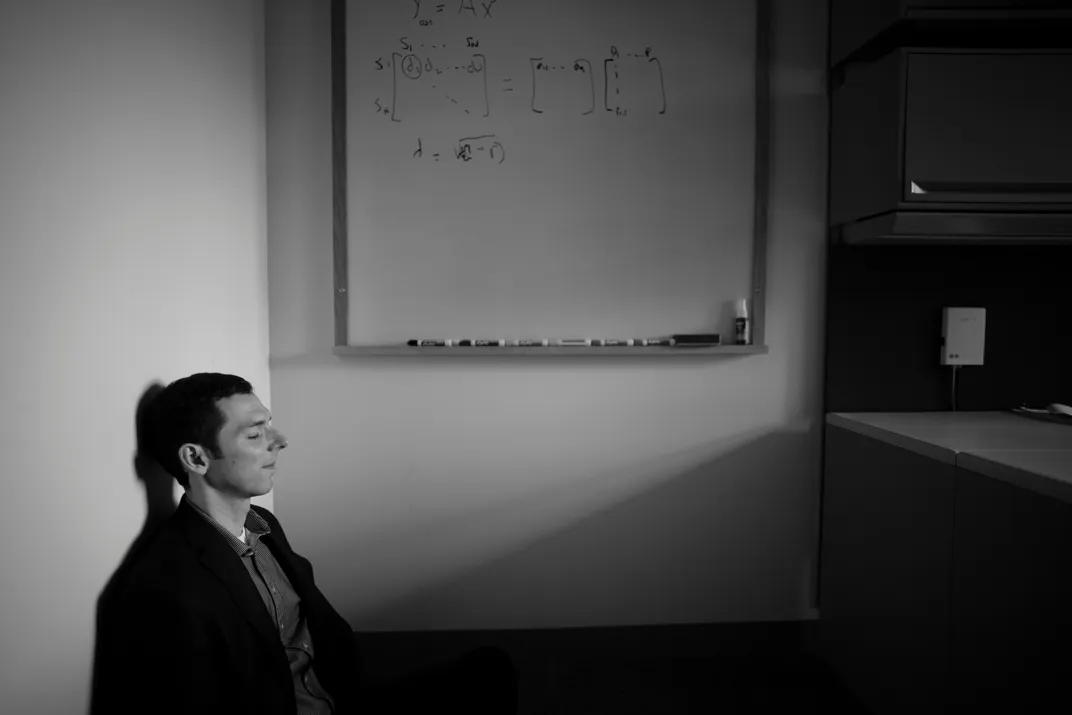
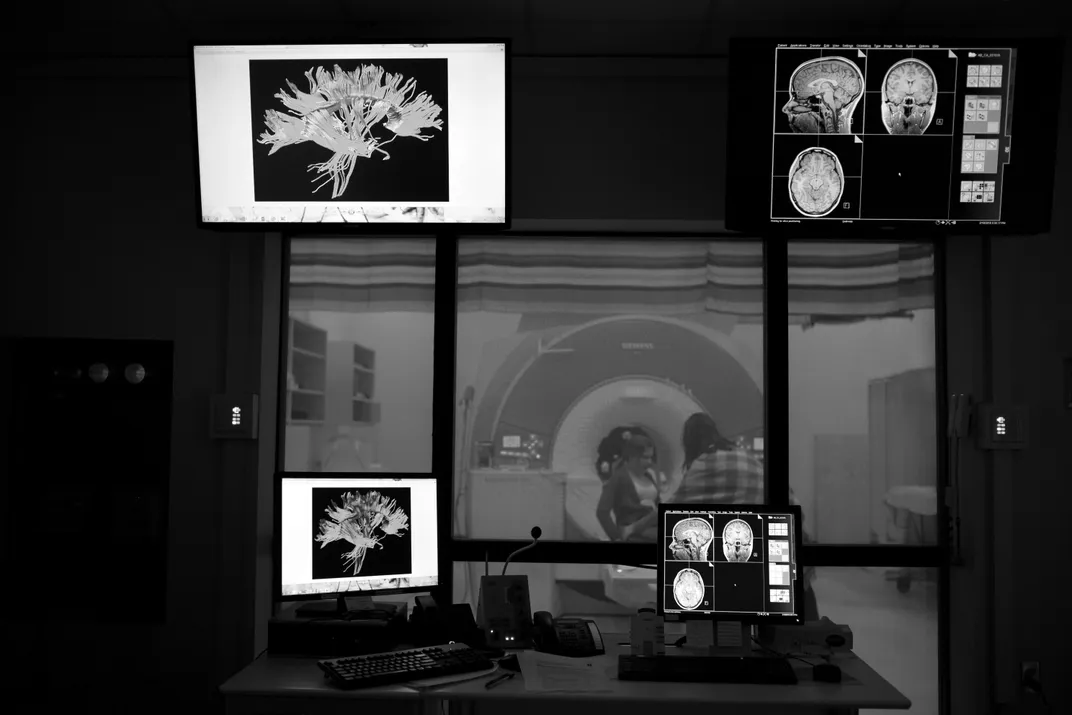
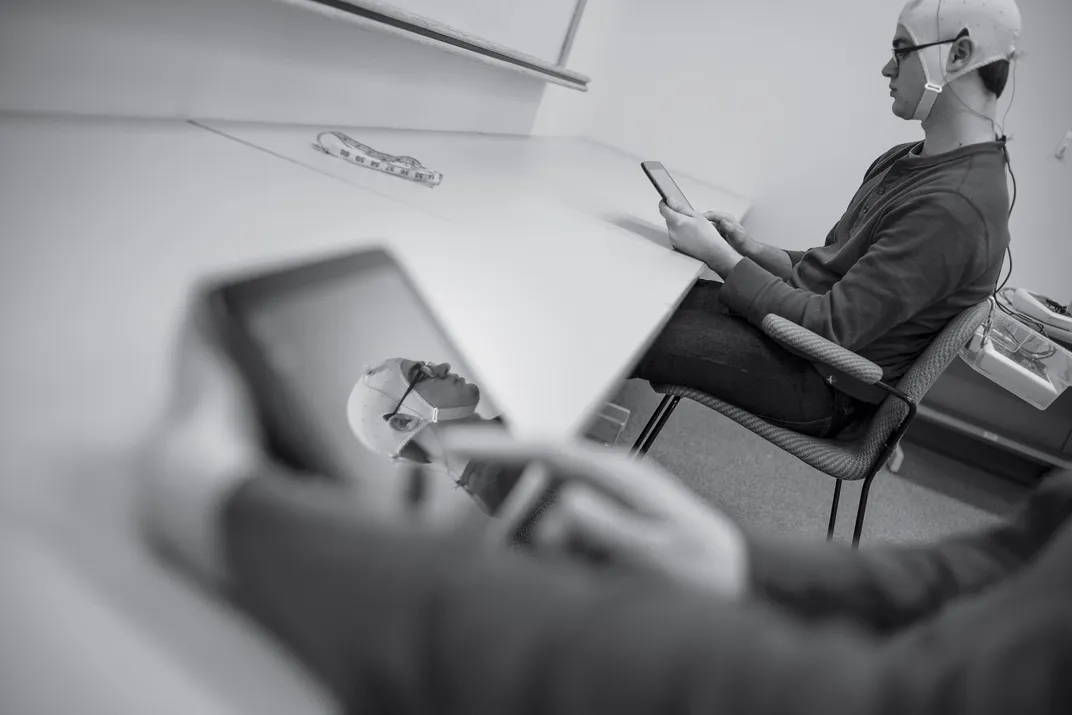
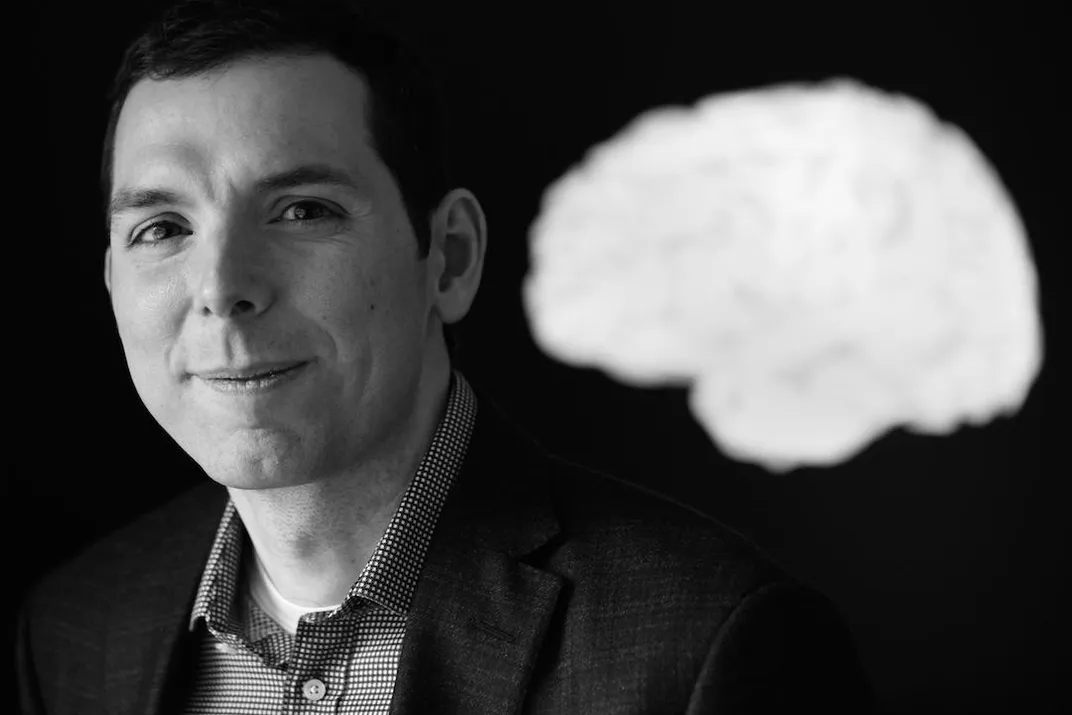
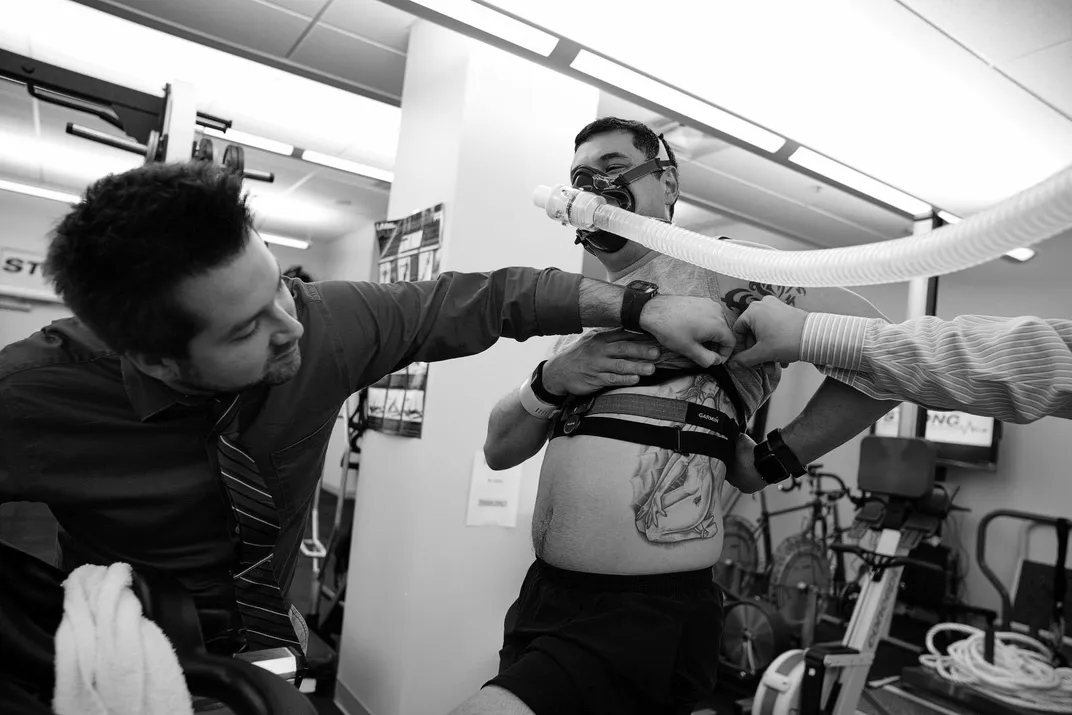
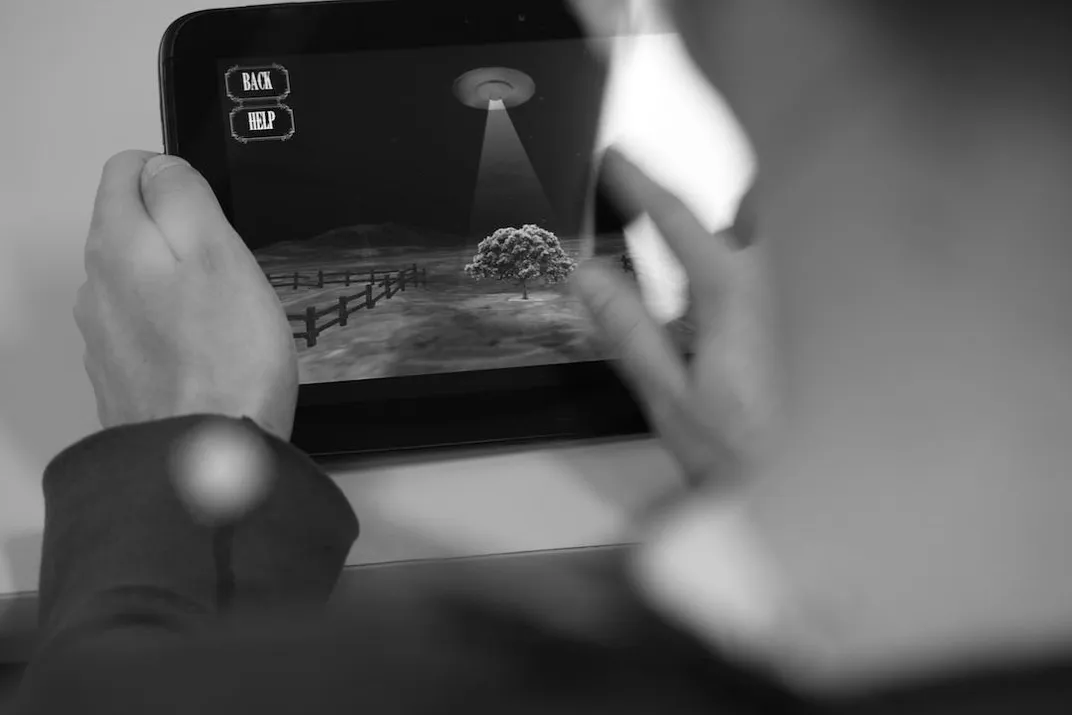
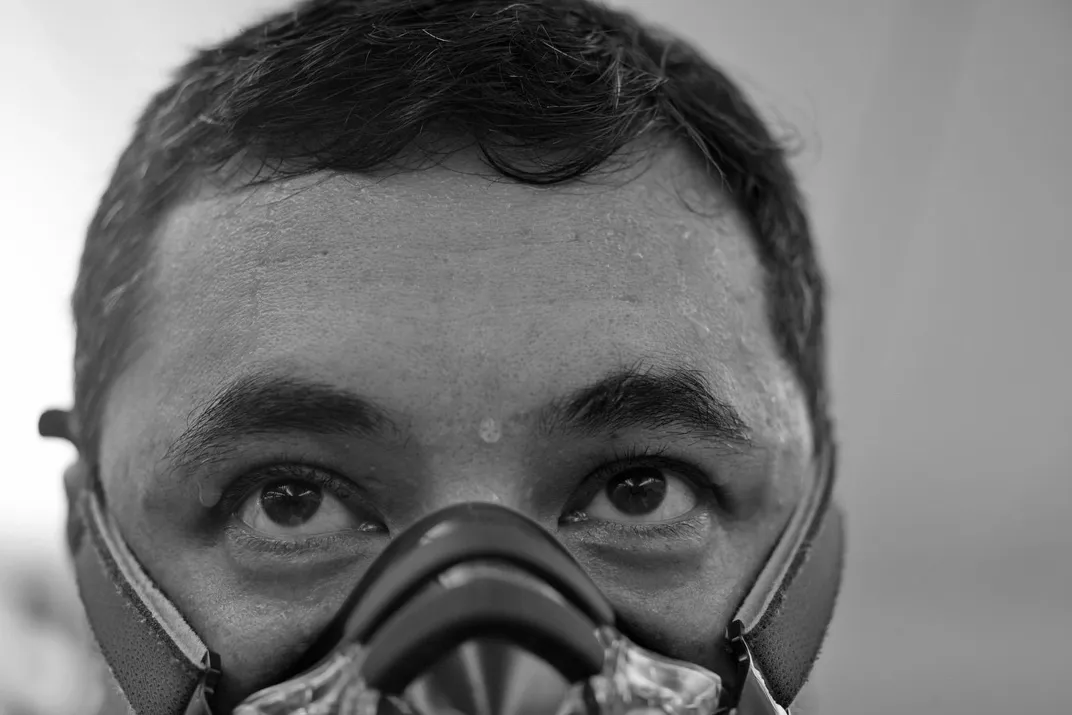
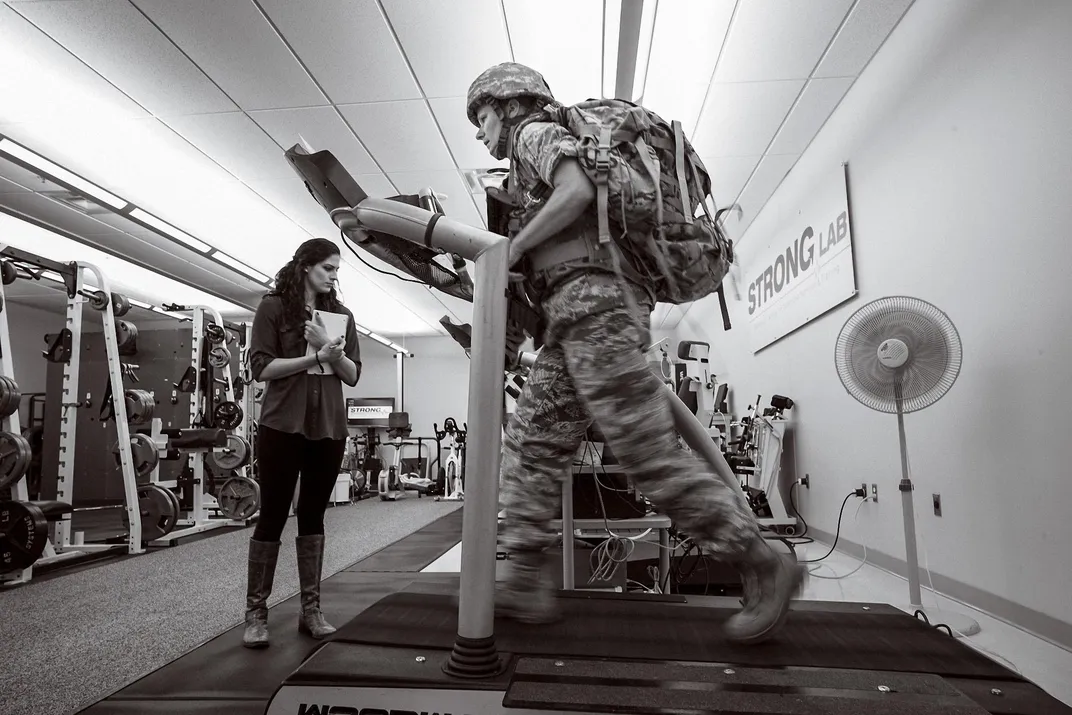
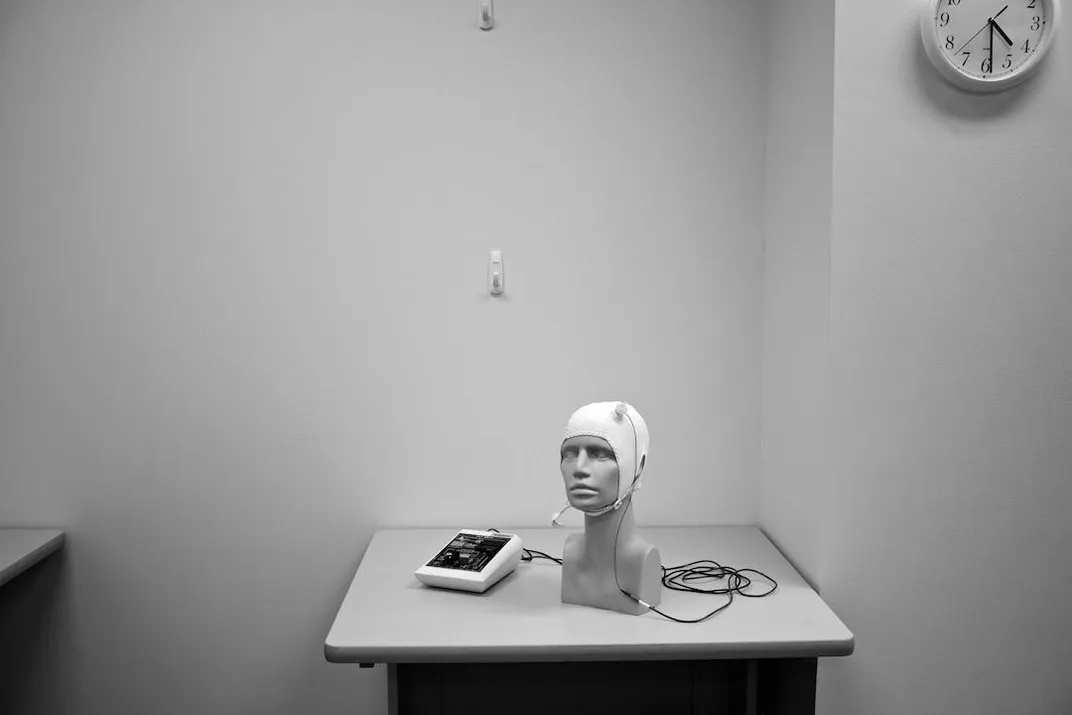
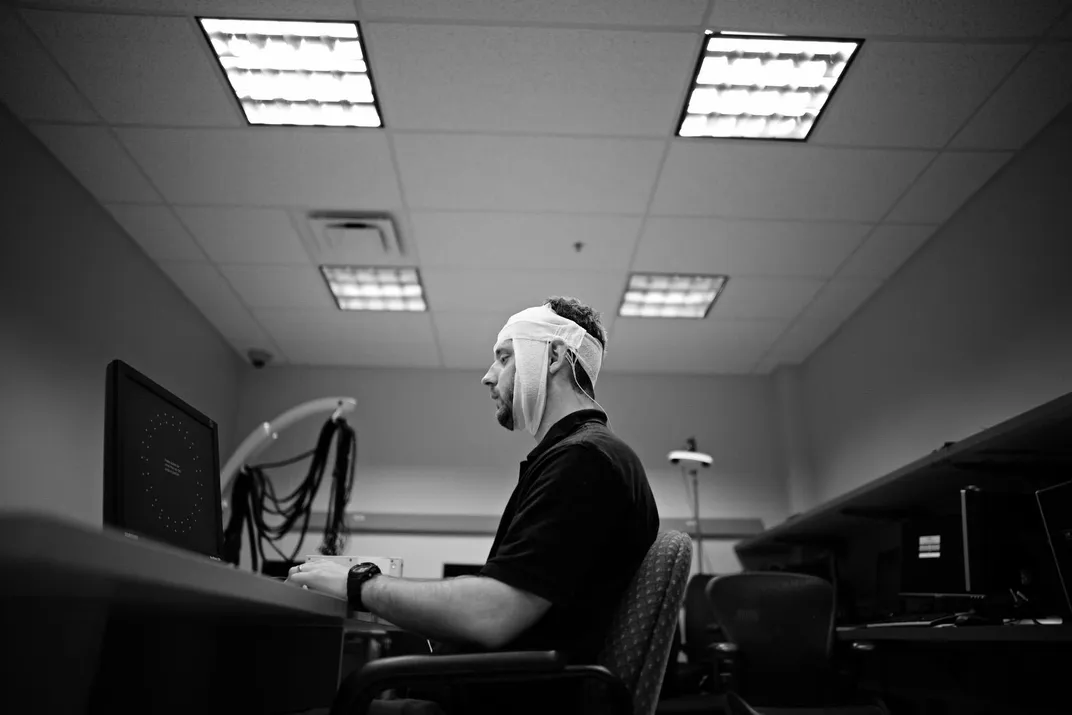
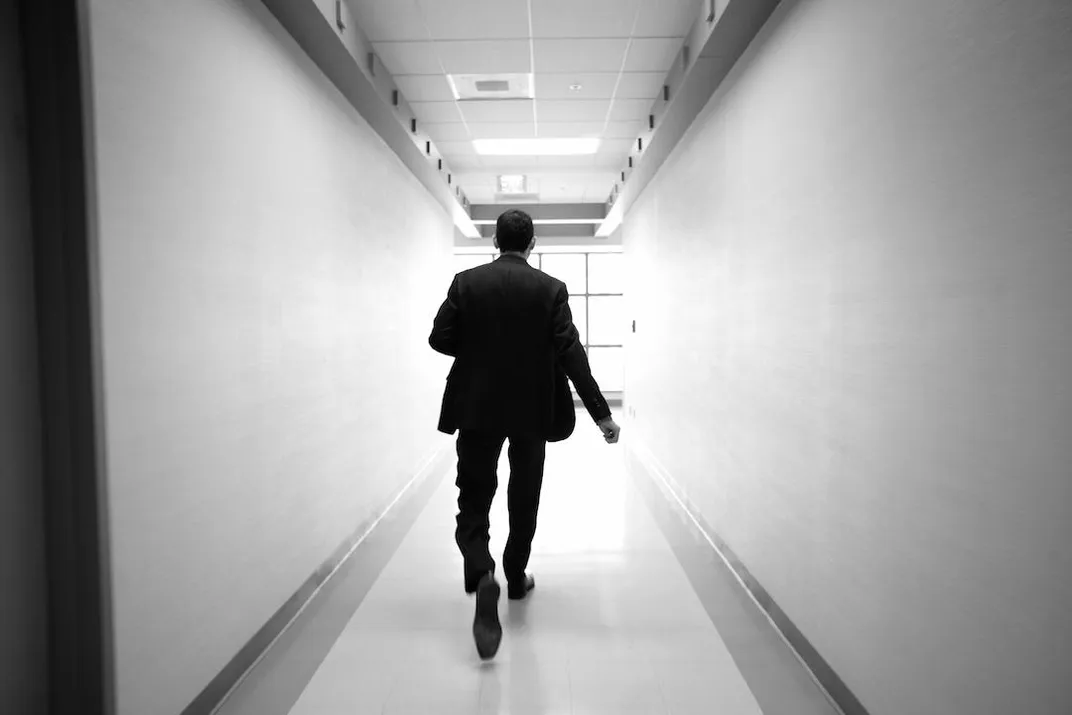
/https://tf-cmsv2-smithsonianmag-media.s3.amazonaws.com/accounts/headshot/SQJ_1601_India_Contrib_04.jpg)